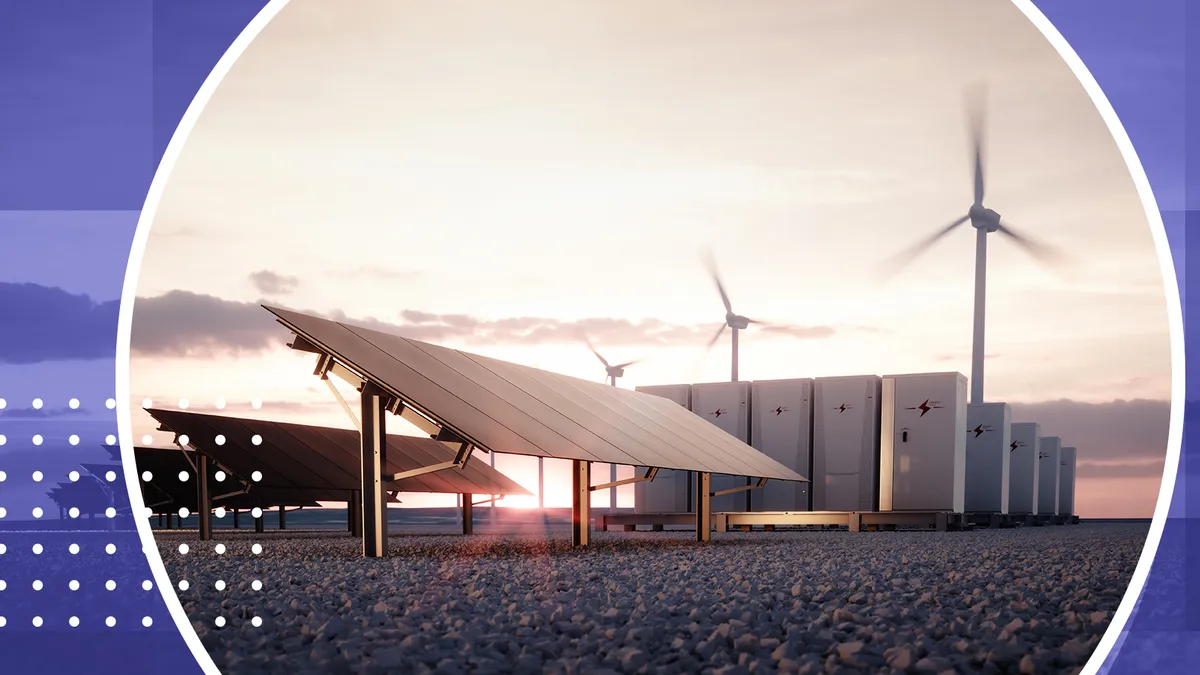Dive Brief:
- The U.S. saw 168 MW/288 MWh of energy storage deployed in Q2 2020, the industry's second-largest deployment behind Q4 2019, according to a joint report by Wood Mackenzie and the U.S. Energy Storage Association.
- COVID-19 triggered a slowdown in commercial and industrial installations, but residential growth remains strong in California and Hawaii as a result of incentives and resiliency programs.
- Utility-scale installations are expected to drive continued growth through the next several years as falling prices makes renewables-plus-storage increasingly cost competitive.
Dive Insight:
Despite slight slowing in commercial and industrial installations due to COVID-19, the U.S. energy storage industry saw record-breaking deployments during the second quarter of 2020, and rapid expansion is expected to continue in the months to come.
The industry deployed 168 MW/288 MWh of storage during the second quarter, a 72% increase over the first quarter of 2020 and a 117% increase year-over-year. The industry's quarterly record, set in Q4 2019, is 186.4 MW, according to the U.S. Energy Storage Monitor released Sept. 3 by the U.S Energy Storage Association and Wood Mackenzie.
Although the numbers are not yet final, the industry already expects to post more records before the year is done, according to Dan Finn-Foley, head of energy storage at Wood Mackenzie.
"We already know that Q3 will be a big quarter," he said. "Based on what we're seeing now, it would be surprising if Q3 is not a big increase over Q2."
Energy storage is still a small enough market that a single large installation can give a significant boost to the larger industry, Finn-Foley said, and several large systems are expected to come online toward the end of 2020.
A single large utility-scale deployment in California accounted for more than two-thirds of the total front-of-meter deployment during the second quarter of this year, but Finn-Foley said the bulk of this past quarter's activity came from residential markets.
"Desire for resilience in California is growing," Finn-Foley said, "and in Hawaii, pretty much everyone is getting storage to go with solar."
Those two states, Finn-Foley said, accounted for 80% of residential deployments. Government incentives continue to drive demand for residential installations, he added.
Utility-scale installations are more geographically dispersed, and in the coming months and years, this segment is expected to drive the greatest growth for energy storage, Finn-Foley said.
"It's out-competing other assets, including natural gas," he said. "Solar and wind are taking a larger chunk of the resource planning, and renewables and storage are making up a larger share at the expense of natural gas."
The cost of energy storage has dropped 85% over the last decade, and declines of roughly 10% per year are expected to continue for at least the next two years, according to Finn-Foley. He said energy storage is expected to see continued growth for the foreseeable future, in line with continued declines in price.














